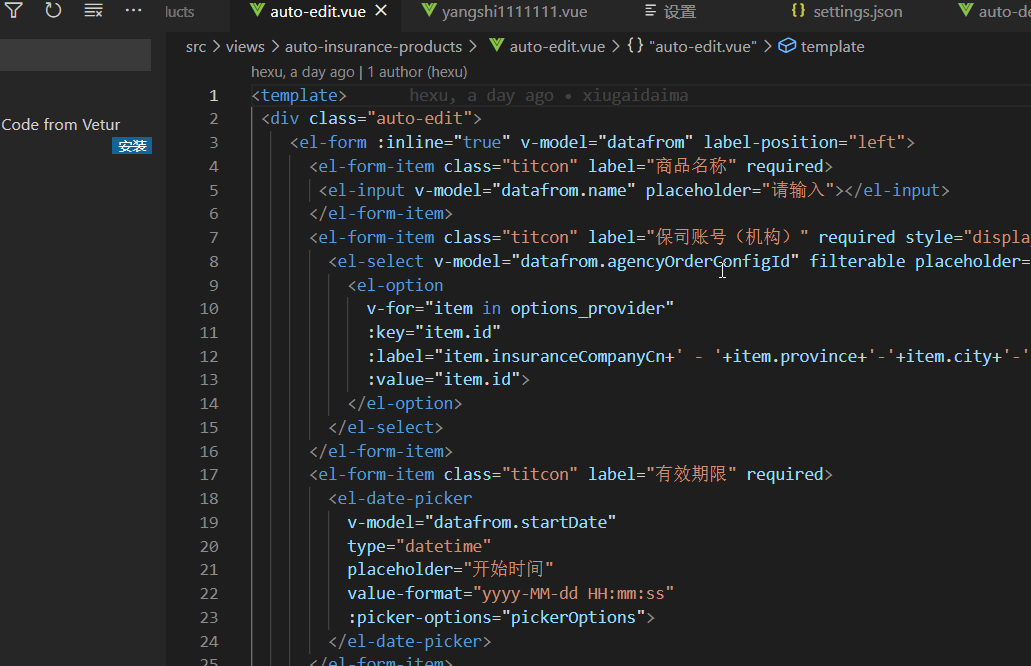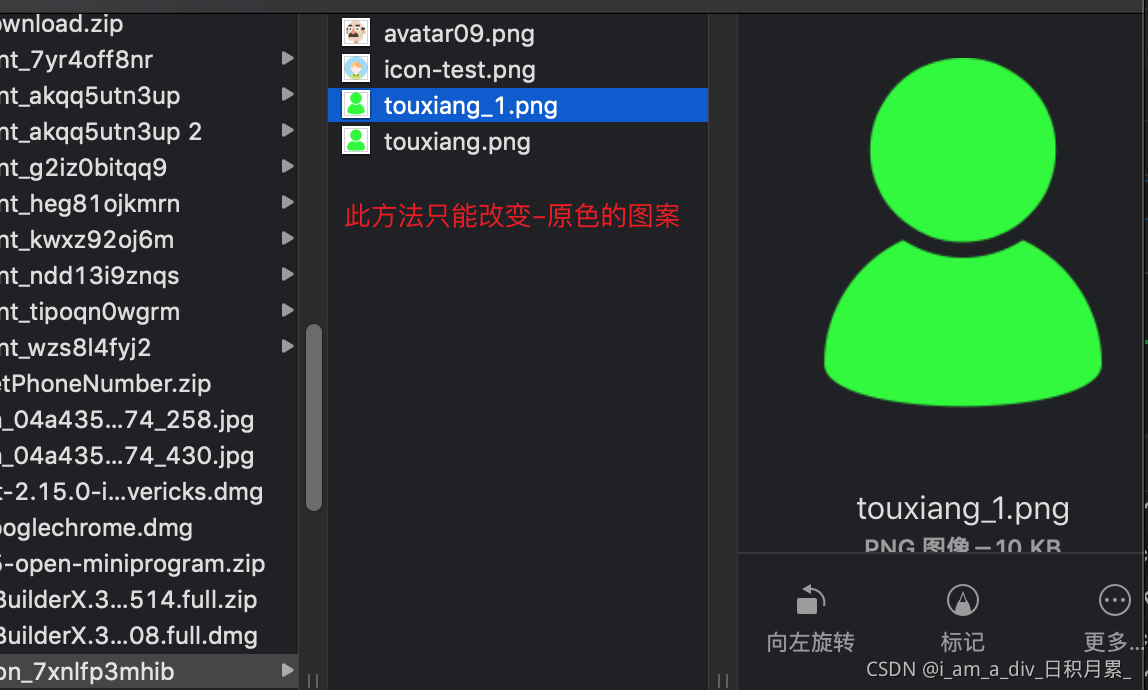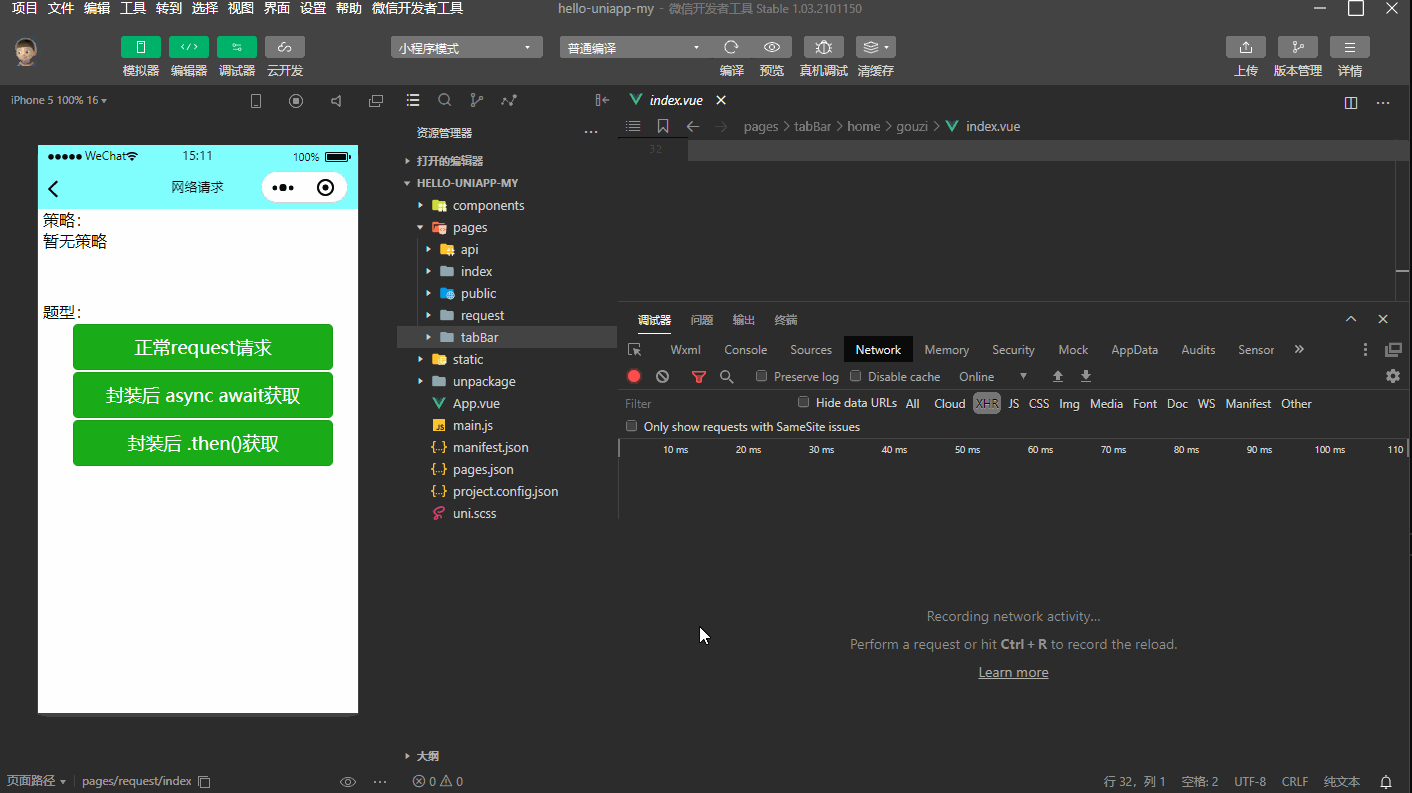系统平台:Ubuntu 10.04
开发平台:S3C2440开发板
xxxxxxxxxxxxxxxxxxxxxxxxxxxxxxxxxxxxxxxxxxxxxxxxxxxxxxxxxxxxxxxxxxxxxxxxxxxxxxxxxxxxxx
一。初探linux内核模块
内核模块:内核本身是很庞大的一个结构,需要的组件很多。编译内核时,用户 可以把所有的代码编译进内核,但是这样会引起两个问题:一是内核过大;二是 当需要添加或者删除内核时,需要重新再编译内核。所以有了内核模块的概念。 模块并不编译到内核中,编译后存放在指定的目录,当需要使用时动态加载。
1.1下面是一个非常经典的hello world代码: 目录:1st
/*2nd_module/1st*/
1 #include //包含了很多装载模块需要的符号和函数的定义
2 #include //用于指定初始化函数和清除函数
3
4 static int __init test_init(void) //内核初始化函数
5 {
6 printk("hello world!\n"); //打印函数,和prinft类似
7 return 0;
8 }
9
10 static void __exit test_exit(void)//内核清除函数
11 {
12 printk("good bye!\n");
13 }
14
15 module_init(test_init); //指定初始化函数
16 module_exit(test_exit); //指定清除函数
17
18 MODULE_LICENSE("GPL"); //指定代码使用的许可证
19 MODULE_AUTHOR("xiao bai"); //指定作者
20 MODULE_VERSION("1.0"); //指定代码修订号
1.2再来一个Makefile:
(注:如果不知道“make -C $(KDIR) M=`pwd` modules ”语句的意思,可以查看linux内核驱动归纳总结(一):内核的相关基础概念的第六小节)
obj-m += test.o
KDIR:=/root/Desktop/drives/nfsroot-29/linux-2.6.29
all:
make -C $(KDIR) M=`pwd` modules
clean:
make -C $(KDIR) M=`pwd` modules clean
rm -f modules.order
1.3编写完毕后在代码目录下执行“make”命令,就会产生test.ko文件,在开发板 上通过命令“insmod test.ko”,插入模块,通过命令“lsmod”查看当前的所有 装载上的模块,通过命令“rmmod test”卸载该模块。并且,加载时会输出 “hello world!”,卸载时会输出“good bye!”。
[root: 1st]# rmmod test
good bye!
[root: 1st]# insmod test.ko
hello world!
[root: 1st]# lsmod
test 1060 0 - Live 0xbf00c000
[root: 1st]# rmmod test
good bye!
[root: 1st]#
1.4上面的程序包含了三个知识点:
1.4.1内核初始化函数:
static int __init test_init(void) //内核初始化函数
{
}
module_init(test_init); //指定初始化函数
1)初始化函数是在模块加载时自动被调用,执行相关的初始化工作。
2)static和__init都是可以不加的,因为初始化函数除了加载时执行外没有别的 用处,加上static只是声明一下,该函数只能在模块内部使用。而加上__init后,它暗 示内核该函数仅在初始化时使用,所以在模块被装载后,模块装载器就会把该函 数扔掉,释放占用的内存空间。
3)但是moudle_init()是必须要的,因为这样才能让模块加载器知道这是个初始化 函数,没有这一步,函数就不会得到调用。
4)初始化函数成功返回0,失败返回对应的错误码。
1.4.2内核清除函数:
static void __exit test_exit(void)//内核清除函数
{
}
module_exit(test_exit); //指定清除函数
1)内核清除函数是在模块卸载是自动被调用,执行相关的清除工作。
2)同上,static和__exit都是可以不加的,但如果加上__exit,模块直接编 译进内核或者不允许卸载,被标志为__exit的函数会被自动丢弃掉。
3)module_exit是必须的,因为这样内核才能找到清除函数。
4)清除函数的没有返回值。
5)一个没有定义清除函数的模块,是不允许被加载的。
1.4.3模块的描述性定义:
MODULE_LICENSE("GPL"); //指定代码使用的许可证
MODULE_AUTHOR("xiao bai"); //指定作者
MODULE_VERSION("1.0"); //指定代码修订号
1)以上的都是一些都该模块的描述,除了上面的还有MODULE_ALIAS(模块的别名) MODULE_DESCRIPTION(描述用途)等。
2)MODULE_LICENSE一般都是要写的,告诉内核该程序使用的许可证,不然在加载 时它会提示该模块污染内核。
3)MODULE_声明可以声明在源代码任意位置,但习惯放在代码的最后。
xxxxxxxxxxxxxxxxxxxxxxxxxxxxxxxxxxxxxxxxxxxxxxxxxxxxxxxxxxxxxxxxxxxxxxxxxxxxxxxxxxxxxx
二。内核中的printk
printk与printf的用法是差不多的,最大的区别就是printk可以指定打印的优先 级。另外一个区别就是,printf只用在用户态,printk用于内核态。
下面由程序讲解 目录:2nd
/*2nd_module/2nd*/
1 #include
2 #include
3
4 static int __init test_init(void)
5 {
6 printk("hello world!\n");
7 printk("<0>" "hello world! 0\n");
8 printk("<1>" "hello world! 1\n");
9 printk("<2>" "hello world! 2\n");
10 printk("<3>" "hello world! 3\n");
11 printk("<4>" "hello world! 4\n");
12 printk("<5>" "hello world! 5\n");
13 printk("<6>" "hello world! 6\n");
14 printk("<7>" "hello world! 7\n");
15 return 0;
16 }
17
18 static void __exit test_exit(void)
19 {
20 printk("good bye!\n");
21 }
22
23 module_init(test_init);
24 module_exit(test_exit);
25
26 MODULE_LICENSE("GPL");
27 MODULE_AUTHOR("xiao bai");
28 MODULE_VERSION("1.0");
编译后加载模块,发现输出内容为:
[root: 2nd]# insmod test.ko
hello world!
hello world! 0
hello world! 1
hello world! 2
hello world! 3
hello world! 4
hello world! 5
hello world! 6
输出唯独缺少了最后一个"hello world! 7",这是因为printk输出优先级的导致 的。printk的优先级如下,在内核目录下inxlude/linux/kernel.h下有记录:
91 #define KERN_EMERG "<0>" /* system is unusable */
92 #define KERN_ALERT "<1>" /* action must be taken immediately */
93 #define KERN_CRIT "<2>" /* critical conditions */
94 #define KERN_ERR "<3>" /* error conditions */
95 #define KERN_WARNING "<4>" /* warning conditions */
96 #define KERN_NOTICE "<5>" /* normal but significant condition */
97 #define KERN_INFO "<6>" /* informational */
98 #define KERN_DEBUG "<7>" /* debug-level messages */
其中<0>的优先级最高,<7>优先级最低。上面的printk语句的优先级都可以用字符 串代替,如下面两句是同等作用的:
p { margin-bottom: 0.21cm; }printk("<3>" "hello world! 3\n");
printk(KERN_ERR "hello world! 3\n")
如果调用printk使用的优先级低于或等于控制台的默认优先级,就不能被输出到 控制台终端上显示,所以在minicom界面中看不到最后一句的输出。
按照以上的推测,可以得到两个结论:
一、如果不指定prinfk的优先级,prinfk的默认优先级比控制台的优先级高,所 以才能显示在控制台上。
二、控制台的优先级是6,因为低于6优先级的语句不能打印出来。
printk的默认优先级在内核目录kernel/printk.c定义:
47 /* printk's without a loglevel use this.. */
48 #define DEFAULT_MESSAGE_LOGLEVEL 4 /* KERN_WARNING */
49
50 /* We show everything that is MORE important than this.. */
51 #define MINIMUM_CONSOLE_LOGLEVEL 1 /* Minimum loglevel we let people use */
52 #define DEFAULT_CONSOLE_LOGLEVEL 7 /* anything MORE serious than KERN_DEBUG*/
文件中定义了printk的默认输出优先级为4,并定义了一般使用的最大和最小优先 级1和7。
而终端控制台的输出优先级配置在文件/proc/sys/kernel/printk中:
[root: /]# cat /proc/sys/kernel/printk
7 4 1 7
7 4 1 7分别是:
7:console_loglevel //这个就是控制台的默认优先级
4:default_message_loglevel // 这个是printk的默认输出优先级
1:minimum_console_level
7:default_console_loglevel
可以通过修改该文件使所有优先级的消息都显示出来。
[root: /]# echo 8 > /proc/sys/kernel/printk
注意的是,即使没有显示在控制台的内核消息,也会追加到/var/log/messages,通过查看/var/log/messages就能看到。
小技巧:可以通过printk的优先级定义是否输出调试信息:目录:3rd
1 #include
2 #include
3
4 #define DEBUG_SWITCH 0
5 #if DEBUG_SWITCH
6 #define P_DEBUG(fmt, args...) printk("<1>" "[%s]"fmt, __FUNCTION__, ##args)
7 #else
8 #define P_DEBUG(fmt, args...) printk("<7>" "[%s]"fmt, __FUNCTION__, ##args)
9 #endif
10
11
12 static int __init test_init(void)
13 {
14 printk("hello world!\n");
15 P_DEBUG("debug!\n");
16 return 0;
17 }
18
19 static void __exit test_exit(void)
20 {
21 printk("good bye!\n");
22 }
23
24 module_init(test_init);
25 module_exit(test_exit);
26
27 MODULE_LICENSE("GPL");
28 MODULE_AUTHOR("xiao bai");
29 MODULE_VERSION("1.0");
当#define DEBUG_SWITCH 0时,P_DEBUG语句并不输出到控制台。
相反,当#define DEBUG_SWITCH 1时,P_DEBUG语句输出到控制台。
xxxxxxxxxxxxxxxxxxxxxxxxxxxxxxxxxxxxxxxxxxxxxxxxxxxxxxxxxxxxxxxxxxxxxxxxxxxxxxxxxxxxxx
三。内核传参————module_param
在用户态的C语言中,函数的传参使用main(int argc, char* argv),内核的传参使用了另外一种方法:
步骤一、在内核函数中用module_param指定模块参数。
步骤二、加载内核时传递参数给模块。
module_param函数使用方法:
module_param(name, type, perm)
name:内核参数的名称,自己定义;
type:内核参数的类型,常见的类型byte、short、int、long、ulong、bool 、charp(字符指针);
perm:内核参数的权限S_IRUGO(对模块参数具有读权限)。其实权限和文件的 权限差不多,具体可以查看"include/linux/stat.h"。
所以,要定义一个int模块参数,权限是0644,在函数中需要定义:
int a=0;
module_paaram(a, int, 0644);
内核加载模块时传递参数的方法:
使用命令:insmod xxx.ko a=1
如果加载模块时不指定参数,模块会使用默认值0,否则会使用1。
模块加载后,并且他的权限不为0,就可以在/sys/module/xxx/parameter目录下 找到对应的模块参数。
模块参数使用例子:目录 4th
/*2nd_module/4th*/
1 #include
2 #include
3
4 int num = 123;
5 char *name = "xiao bai";
6
7 static int __init test_init(void)
8 {
9 printk("hello world!\n");
10 printk("num = %d, name:[%s]\n", num, name);
11 return 0;
12 }
13
14 static void __exit test_exit(void)
15 {
16 printk("good bye!\n");
17 }
18
19 module_init(test_init);
20 module_exit(test_exit);
21 module_param(num, int, 0644);
22 module_param(name, charp, 0644);
23
24 MODULE_LICENSE("GPL");
25 MODULE_AUTHOR("xiao bai");
26 MODULE_VERSION("1.0");
几种指定模块参数时的效果:
[root: 4th]# insmod test.ko
hello world!
num = 123, name:[xiao bai]
[root: 4th]# rmmod test
good bye!
[root: 4th]# insmod test.ko num=321 name='haha'
hello world!
num = 321, name:[haha]
[root: 4th]# rmmod test
good bye!
[root: 4th]# insmod test.ko name='haha'
hello world!
num = 123, name:[haha]
查看/sys/module/test/parameter目录,出现了模块参数:
[root: 4th]# ls /sys/module/test/parameters/
name num
xxxxxxxxxxxxxxxxxxxxxxxxxxxxxxxxxxxxxxxxxxxxxxxxxxxxxxxxxxxxxxxxxxxxxxxxxxxxxxxxxxxxxx
四、内核函数间的调用
内核函数间的调用有两种方法:
1)、把需要调用的函数编译进模块,与C语言的静态库类似。
2)、把许压迫被调用的函数导出到符号表,方便模块使用,与C语言的动态库类似
先说第一个方法:多文件编译 目录 5th
1)编写被调用的函数文件haha.c
1 #include
2 #include "haha.h"
3
4 void haha(void)
5 {
6 printk("haha!\n");
7 }
2)编写头文件haha.h
1 #ifndef __HAHA_H__
2 #define __HAHA_H__
3
4 void haha(void);
5
6 #endif
3)编写模块文件test.c
1 #include
2 #include
3 #include "haha.h"
4
5 static int __init test_init(void)
6 {
7 printk("hello world!\n");
8 haha();
9 return 0;
10 }
11
12 static void __exit test_exit(void)
13 {
14 printk("good bye!\n");
15 }
16
17 module_init(test_init);
18 module_exit(test_exit);
19
20 MODULE_LICENSE("GPL");
21 MODULE_AUTHOR("xiao bai");
22 MODULE_VERSION("1.0");
4)编写Makefile,与之前的Makefile不一样,因为涉及到多文件编译
1 obj-m += test_haha.o //生成test_haha.ko
2 test_haha-objs += haha.o test.o //test_haha.ko有haha.o和test.o组成
3
4 KDIR:=/root/Desktop/drives/nfsroot-29/linux-2.6.29
5 all:
6 make -C $(KDIR) M=`pwd` modules
7 clean:
8 make -C $(KDIR) M=`pwd` modules clean
9 rm -f modules.order
编译完毕后生成test_haha,ko,看一下效果
[root: 5th]# insmod test_haha.ko
hello world!
haha!
值得指出的是,上面的方法一般不用。应该使用下面的方法。
第二种方法:导出符号表EXPORT_SYMBOL :目录 6th
导出符号表是指,在定义一个函数后,在模块中使用语句"EXPORT_SYMBOL(xxxxx)" 将函数导出。通过这样,内核就知道了该函数和在内存中对应的地址,这样模块 就可以调用导出的函数了。在"/proc/kallsyms"文件中对应这符号表,它记录了函数的符号和函数在内存所在的地址。
看看方法:
1)在6th/core目录下编写被调用的函数的文件haha.c
1 #include
2 #include
3 #include "../include/haha.h"
4
5 int haha(void)
6 {
7 printk("haha!\n");
8 return 0;
9 }
10
11 EXPORT_SYMBOL(haha); //导出函数
12 MODULE_LICENSE("GPL");
2)在6th/core目录下编写Makefile,用于编译haha.c成haha.ko
1 obj-m += haha.o
2
3 KDIR:=/root/Desktop/drives/nfsroot-29/linux-2.6.29
4 all:
5 make -C $(KDIR) M=`pwd` modules
6 clean:
7 make -C $(KDIR) M=`pwd` modules clean
8 rm -f modules.order
3)在6th/include目录下编写头文件haha.h
1 #ifndef __HAHA_H__
2 #define __HAHA_H__
3
4 int haha(void);
5
6 #endif
4)在6th/driver目录下编写文件test.c
1 #include
2 #include
3 #include "../include/haha.h"
4
5 static int __init test_init(void)
6 {
7 printk("hello world!\n");
8 haha();
9 return 0;
10 }
11
12 static void __exit test_exit(void)
13 {
14 printk("good bye!\n");
15 }
16
17 module_init(test_init);
18 module_exit(test_exit);
19
20 MODULE_LICENSE("GPL");
21 MODULE_AUTHOR("xiao bai");
22 MODULE_VERSION("1.0");
5)在6th/driver目录下编写Makefile,用于编译test.c
1 obj-m += test.o
2
3 KDIR:=/root/Desktop/drives/nfsroot-29/linux-2.6.29
4 all:
5 make -C $(KDIR) M=`pwd` modules
6 clean:
7 make -C $(KDIR) M=`pwd` modules clean
8 rm -f modules.order
最终会生成两个文件,一个是core目录下的haha.ko,一个是driver目录下的 test.ko。这两个文件的加载也要讲究顺序。
如果先加载test.ko的话会出错:
[root: driver]# insmod test.ko
test: Unknown symbol haha
insmod: cannot insert 'test.ko': unknown symbol in module or invalid parameter
这是因为内核不能找到函数haha:
[root: core]# cat /proc/kallsyms | grep haha //没有显示任何东西
所以需要先加载模块haha.ko,这样就可以在/proc/kallsyms中找到
[root: /]# cd review_driver/2nd_module/6th/core/
[root: core]# insmod haha.ko
[root: core]# cat /proc/kallsyms | grep haha
00000000 a haha.c [haha]
bf000000 t $a [haha]
bf00001c t $d [haha]
bf000044 r __kstrtab_haha [haha]
c4827080 ? __mod_license12 [haha]
bf000054 r __ksymtab_haha [haha]
bf000054 r $d [haha]
00000000 a haha.mod.c [haha]
c482708c ? __module_depends [haha]
c4827098 ? __mod_vermagic5 [haha]
bf000280 d __this_module [haha]
bf000000 T haha [haha]
c0225c10 u printk [haha]
[root: core]#
到出符号表之后就可以加载模块test.ko了
[root: core]# cd ../driver/
[root: driver]# insmod test.ko
hello world!
haha!
随便提一下两个小问题:
1)、函数是必须有"#include "
原因一:printk的调用需要
原因二:如果不加上面的命令就不会显示"bf000000 T haha [haha]", 而显示"bf000000 t haha [haha]",小写t表示该符号未定义。
2)、模块的引用技术:
[root: 6th]# insmod core/haha.ko
[root: 6th]# lsmod
haha 904 0 - Live 0xbf000000 //0 无引用
[root: 6th]# insmod driver/test.ko
hello world!
haha!
[root: 6th]# lsmod
test 1084 0 - Live 0xbf003000
haha 904 1 test, Live 0xbf000000 //被引用一次,test模块引用
可以看到,加载了test.ko时,haha模块产生了变化,如果卸载的时候先卸载haha 是不可以的,因为它还被人引用,必须先卸载test。
xxxxxxxxxxxxxxxxxxxxxxxxxxxxxxxxxxxxxxxxxxxxxxxxxxxxxxxxxxxxxxxxxxxxxxxxxxxxxxxxxxxxxx
源代码:


















